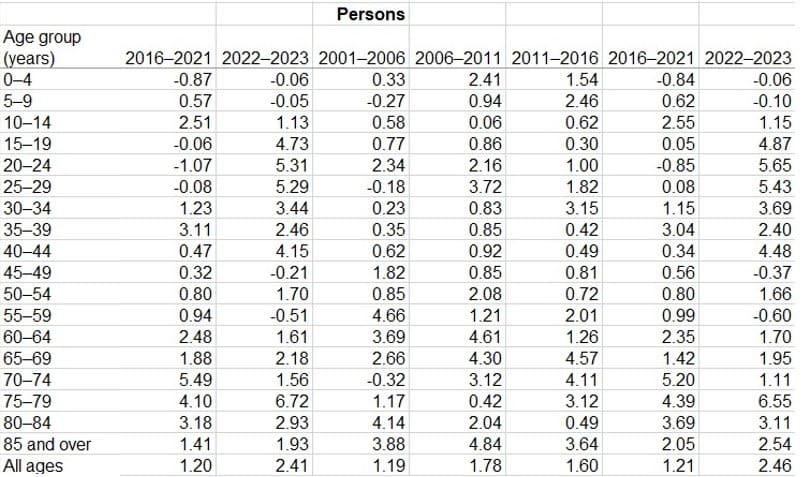Fastest growing cohort of people are aged 75-79 and Governments stay silent: Retirement Living Council
The Retirement Living Council (RLC) has seized on the new national, state and territory population figures released by the Australian Bureau of Statistics today, which showed the nation's population grew by 2.3 % to over 27 million people for the...

The Retirement Living Council (RLC) has seized on the new national, state and territory population figures released by the Australian Bureau of Statistics today, which showed the nation's population grew by 2.3% to over 27 million people for the first time in March 2024. The statistics show the fastest growing cohort is people aged 75-79 with an increase of 6.55% in 12 months. According to the 2023 PwC/Property Council Retirement Census, the average age of entry into a retirement village is 75 and people then live there for eight or nine years.

RLC Executive Director Daniel Gannon said today's figures reiterate all levels of Government can no longer delay the attention required to address the housing needs of an ageing population. “Despite a willingness from operators to develop more age-friendly communities to help accommodate Australia’s ageing population, they continue to face unnecessary barriers from the same governments crying out for more housing supply," he said.
“We now know that 67 per cent of retirement village development applications take more than 365 days to complete assessment, while 23 per cent take more than 730 days. This is alarming and unacceptable at a time when we need more supply. More red tape and complexity in planning systems won’t help build the homes required to appropriately accommodate the demographic 'silver tsunami’ we are facing.”
He added Governments need to prioritise the delivery of more age-friendly housing supply into the market. The RLC policy recommendations to streamline planning systems across the country include:
- Establishing minimum land allocations for the development of retirement communities in under-supplied areas.
- Significant zoning or development bonuses should be offered to incentivise the development of retirement villages, akin to those given to social and affordable housing.
- State governments to establish clear policies for increasing age-friendly developments through the introduction of targets in strategic regional and metropolitan plans.
- Planning authorities should work with industry to identify high-need locations and ageing hot spots.





